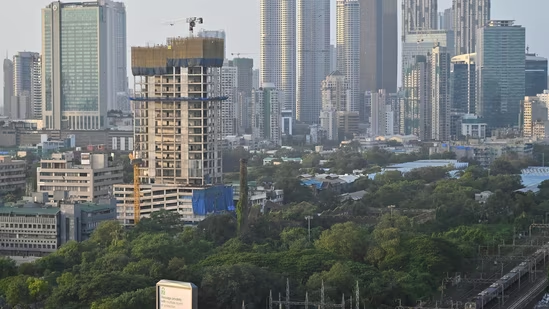Guest Column
Retail in Asia — Different strokes for different folks!


Different Asian countries are at different stages of development of infrastructure, logistics capability and general real estate market development. Retailers are prevailed upon to tailor their local market strategies according to factors such as real estate locations, price points and available logistics. Such issues do not, as a rule, exist in developed world.
The characteristics of Asian consumers that make them different from consumers in developed markets are also noteworthy. To begin with, most Asian populations are witnessing rising incomes. This makes them prone to higher spending impulses than consumers in the West, who are currently in belt-tightening mode.
Also, consumers in India, China and other emerging nations are curious and want to explore new brands. Consumption of high-value items and luxury products is rising. Simultaneously, the Asian consumer at all times keeps an eye on the affordability of products.
This is a seemingly paradoxical approach for retail brands that are used to the blacks and whites of spending patterns in developed countries. They are often not sure how to position themselves in markets where domestic alternatives to their luxury items are available and also accepted.
VARIANTS TO ASIA’S RETAIL STORY
Local Partner Selection: International retailers are deploying a variety of strategies when entering Asian markets. These strategies range from emphasis on Internet marketing and sales to adapting stores and specific products to fit in with local cultures. Local, home-grown luxury brands seek international capital and expertise, while global luxury brands are keen to appeal to local tastes. Thus, partnerships between the two become common.
Local Strategy: In order to be effective in Asia, international retail strategies require to be customized to the nuances of the local market. There are a number of nuances to be accounted for, including the securing of top real estate locations at accurate price points and good supply chain management.
Product Lines: Product lines are more or less the same, considering the inherent clout many well-known brands wield in their particular segments. What differ are the finer elements of product – product superiority (in the case of electronic gadgets), product size (in the case of apparels and accessories, depending upon the average build of people in a specific geography), product pricing (depending upon cost structure in the local markets and other business risks involved), product choices specific to specific climatic conditions, and so on.
Product Differentiation: In Asian countries, international retailers that have displayed little or no disparity in price, product and service from country to country have outperformed peers that lack that same consistency. Zara and H&M are good examples of such retailers, and they do very well. They have a high luxury brand presence internationally, and the fact that there is little brand dilution when going cross-border has proved to be a winning strategy for them.
Brand Awareness, Recognition: The success of international retail and restaurant-chain expansion often depends on brand recognition. For instance, in Singapore there is high recognition of American and Japanese brands due to education, travel and popular culture. In countries such as China, the upper-middle income group is showing an increasing preference for popular Western brands.
Curiosity: It would not be inappropriate to say that Chinese and Indian consumers display an almost child-like eagerness to try new things and explore new facets of their identities. Therefore, they are low on brand loyalty. This is good news for several domestic and international retailers who want to set up base in these countries. However, several international retailers also have to grapple with this limited brand-consciousness in countries such as India, and could only hope that the trend changes in their favour over time.
Entry & Location Strategy: In the West, entry and location strategy is more oriented towards establishing the suitability of the product to a particular population at a certain location. This is possible because demographic data and digitized real estate landscaping is readily available in developed markets. Emerging markets are less organised, and therefore international retailers need to begin by studying the demographics of each market cluster separately. The rising importance of focusing on the correct residential cluster to target cannot be underestimated – there is a deep requirement of adequate market research at the core.
Store Sizes: Depending upon the depth of product offerings for a particular market, store sizes also differ. For instance, Marks & Spencer would probably need a 20,000 sq. ft. space in the UK at a minimum, as it offers diverse product categories in that market. However, in Asian countries where it will invariably carry a more limited range of product offerings, it would not need more than approximately 5000-6000 sq. ft. of space.
Operational Efficiency vs Omni Presence: The Big Bang expansion plans of international retailers into fast-growing emerging markets may not fructify at this moment because of investment capital constraints (as is to be expected in a scenario wherein business in home country is weak). Wal-Mart, for instance, said in 2012 that it will slow down launches of new stores in China and other Asian markets, thereby indicating a greater focus on operational efficiency.
Innovative Strategies: Fashion apparel is one of the segments that is witnessing enormous growth in Asian markets. It is geared towards a young population with rising incomes, yet a determined focus on affordability. Thus, many international and domestic retailers have come up with ‘fast fashion’ to bring affordably-priced apparel to the market in quick cycles. These retailers are also facing stiff competition from Asia’s local players, who have long-standing strength in textiles, an understanding of local tastes and established local distribution networks.
Private Labels Goods: In India, big retailers have been active in introducing private label products, which now account for 20-25% of the profits for most. To cater to needs of value-conscious consumers, private labels can also fill a void in markets such as India where many categories of goods are still under-developed. Private labels have a much lower share of supermarkets sales in Asia than in developed countries, ranging from less than 1% in Indonesia to between 1.5%-30% in Thailand, Hong Kong, Malaysia, South Korea, Singapore and Taiwan (as per L.E.K. Consulting). Euromonitor research shows that in India, this share is close to 11% and 4% in China. Initially, some consumers show suspicion while buying private labels. To overcome this suspicion, retailers are resorting to upgrading packaging, competitive pricing and promoting their international affiliation. All in all, private labels have a bright future in India. According to AC Nielsen, private labels will sell around 5 times more in India by 2015 as against the annual USD 100 million turnover being seen today.
(The writer is Chairman & Country Head, Jones Lang LaSalle India)
-



 News3 weeks ago
News3 weeks agoKW Delhi 6 Mall Onboards New Brands
-



 News4 weeks ago
News4 weeks agoManasum Senior Living Launches IKIGAI GOA, A Senior Living Community in North Goa, in collaboration with Prescon Homes
-



 News2 weeks ago
News2 weeks agoGodrej Properties Sells Rs 3k cr+ Homes of Godrej Zenith, Gurugram, within 3 days
-



 News4 weeks ago
News4 weeks agoBridging India Divide: Top 5 Tier- 2 Cities to Focus On
-



 News3 weeks ago
News3 weeks agoCommercial Realty Gets Tech Savvy: Fast Construction, Enhanced Convenience
-



 News4 weeks ago
News4 weeks agoMultipoint Connection – A Definite Boon
-





 News3 weeks ago
News3 weeks agoRBI’s Status Quo on Key Policy Rates to Help Maintain the Real Estate Growth Momentum, Say Industry Stalwarts
-



 News1 week ago
News1 week agoOlive Announces Dhruv Kalro as Co-Founder
























